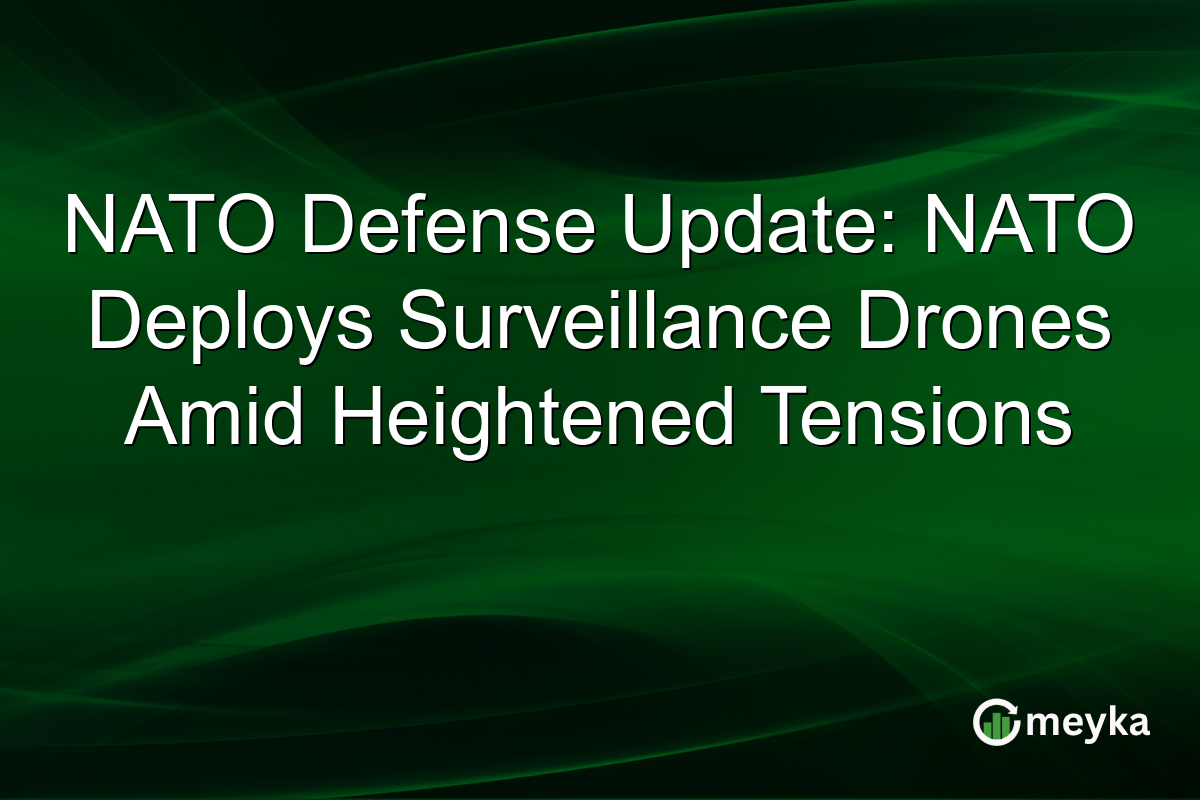NATO’s recent deployment of advanced surveillance drones to Eastern European borders has stirred considerable attention. In response to rising security threats and geopolitical tensions, this strategic move underscores the alliance’s shift in defense strategy. With a focus on enhancing security, NATO’s drone deployment in 2025 showcases advancements in European defense technology and prompts discussions about future military procurement.
NATO’s Strategic Drone Deployment
NATO has announced the deployment of cutting-edge surveillance drones to Eastern Europe. These drones are part of a broader strategy to fortify security amidst increasing threats. By bolstering aerial surveillance, NATO aims to gain better intelligence and monitor potential conflicts effectively. The drones are equipped with the latest technology for real-time data collection. Their deployment is crucial for maintaining vigilance along some of the most contested borders. You can read more about this deployment from Reuters. For the European defense landscape, this move signals a significant enhancement in operational readiness and response capabilities.
Implications for European Defense Technology
The advancement of NATO’s drone technology reflects a broader trend in military innovation. The drones used in this deployment include features such as stealth capabilities and long-range sensors. This technological progress positions NATO at the forefront of defense innovation in Europe. Military procurement now increasingly focuses on acquiring and integrating these advanced systems, highlighting a shift toward modernized warfare methods. This development prompts member states to reevaluate their defense budgets. Discussions about increased military expenditure and prioritizing drone technology in defense strategies are becoming more prevalent.
Military Procurement and Budget Discussions
NATO’s drone deployment has fueled debates about future procurement and defense spending. The investment in such technologies indicates a move toward prioritizing modern warfare capabilities. Member countries are evaluating budget allocations to reflect the growing importance of drone technology. This change emphasizes agile and tech-centric military operations, aligning with NATO’s strategic goals. Some nations are advocating for increased funding to support the integration of similar technologies across their military forces. Discussions about these budget shifts are critical as they can redefine military procurement priorities across the alliance. For more insights, CNBC provides further analysis.
Final Thoughts
NATO’s deployment of surveillance drones in 2025 marks a pivotal moment in its defense strategy. By enhancing surveillance capabilities along Eastern European borders, NATO aims to address escalating tensions effectively. The move underscores the importance of technological innovation in military operations. As defense budgets adjust to these priorities, NATO and its member states need to navigate the complexities of modern warfare. The focus on drone technology highlights a shift toward a more sophisticated and responsive military presence in Europe.
FAQs
NATO’s deployment of drones in 2025 aims to enhance surveillance and intelligence along Eastern European borders to address rising security threats and geopolitical tensions.
The drones are equipped with advanced technology, including stealth capabilities and long-range sensors, enabling real-time intelligence and data collection.
The deployment is prompting member countries to reassess and potentially increase their defense budgets, focusing on modern drone technology and enhanced military capabilities.
Disclaimer:
This is for information only, not financial advice. Always do your research.
